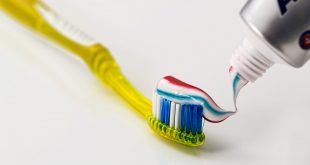By Sandra Reece
Now on the third week of Dental Health Month, we are going to focus on types of anesthesia, as they are essential to alleviating pain for patients at the dentist’s office. Luckily for people of this generation, modern anesthesia technology makes it entirely possible to go through entire surgeries without feeling any discomfort. While anesthesia can be harmful towards older adults that had previous medical problems or conditions such as smoking or seizures, for most people, any type of anesthesia is perfectly fine to use. There are multiple types of anesthesia, and each have their own properties and characteristics.
The most common type of anesthesia in most dental procedures is local anesthesia, usually referred to as novocaine. This anesthesia is the only type that used alone can eliminate all pain. However, the injection is only designed to prevent the nerves in the teeth fibers from sending impulses to the brain, so no sedation occurs. However, many patients choose to combine local anesthesia with other types of sedation substances so that there is less awareness of the procedure.
There are many other types of anesthesia that cause some degree of conscious sedation. Nitrous Oxide, commonly known as “Laughing Gas”, is the lightest kind of conscious sedation. There are some properties to nitrous oxide that make it a favorite among patients. Because it is short acting, once the patient stops breathing it through a mask, it only takes a few minutes for it to leave the body system. As a result, there is no need to request a ride from a family member once the procedure is done. Furthermore, depending on how much the patient wants to feel the effects, they can regulate their breathing to control that. To feel more of the effect, the patient just has to breathe more deeply and frequently. Finally, nitrous oxide is very cheap, as it costs little to no money to use at a dentist office. The only drawback to laughing gas is that the effects are minimal, and are just used to “take the edge off”.
There are stronger sedatives that can be used as well. Oral Premedication can be used as a stronger sedative compared to nitrous oxide, and is not very expensive as well. Usually, the medication is taken an hour before the actual procedure; however, it is necessary to have an escort to bring the patient to and from the office. The other drawback is that oral premedication is unpredictable in its level of effectiveness as well as its period of time in which it acts. The strongest anesthesia that is utilized in dentistry is the Intravenous (I.V.) Sedation, which puts the patient in a comfortable state that reduces awareness throughout the procedure. The onset of action is very quick; however, an escort will also be required after the procedure is completed. The major drawback is its cost, as it is the most expensive anesthesia type on this list.
Anesthesia is often a topic unfamiliar to those visiting the dental office. However, next time, you will be able to choose the type of anesthesia that works best for you.
 Tempus Magazine By Students, For Students
Tempus Magazine By Students, For Students 



